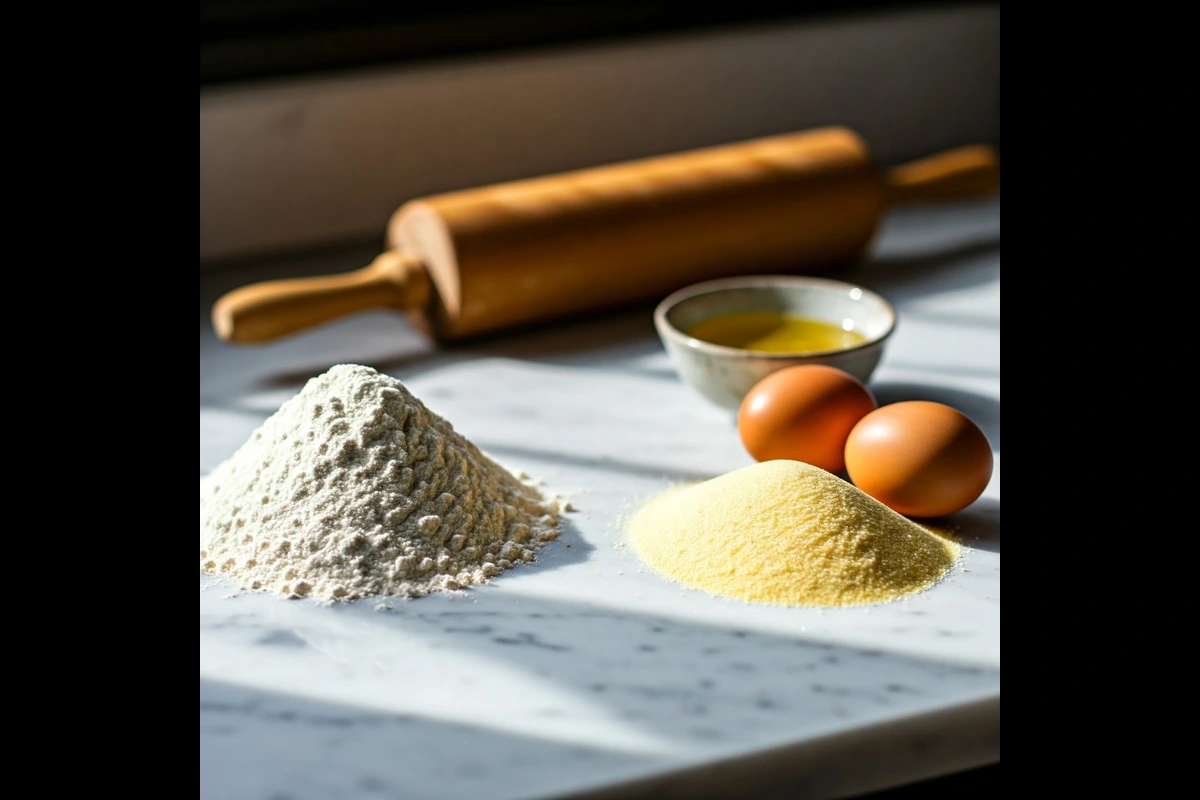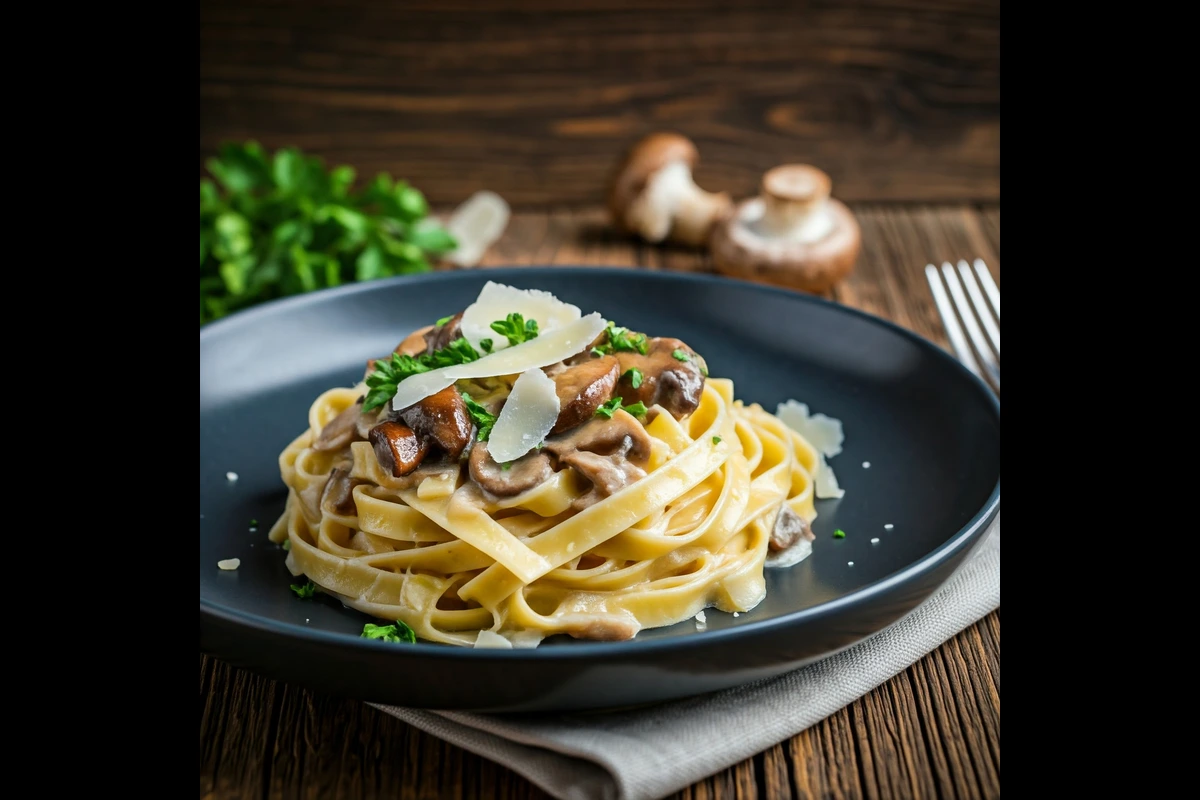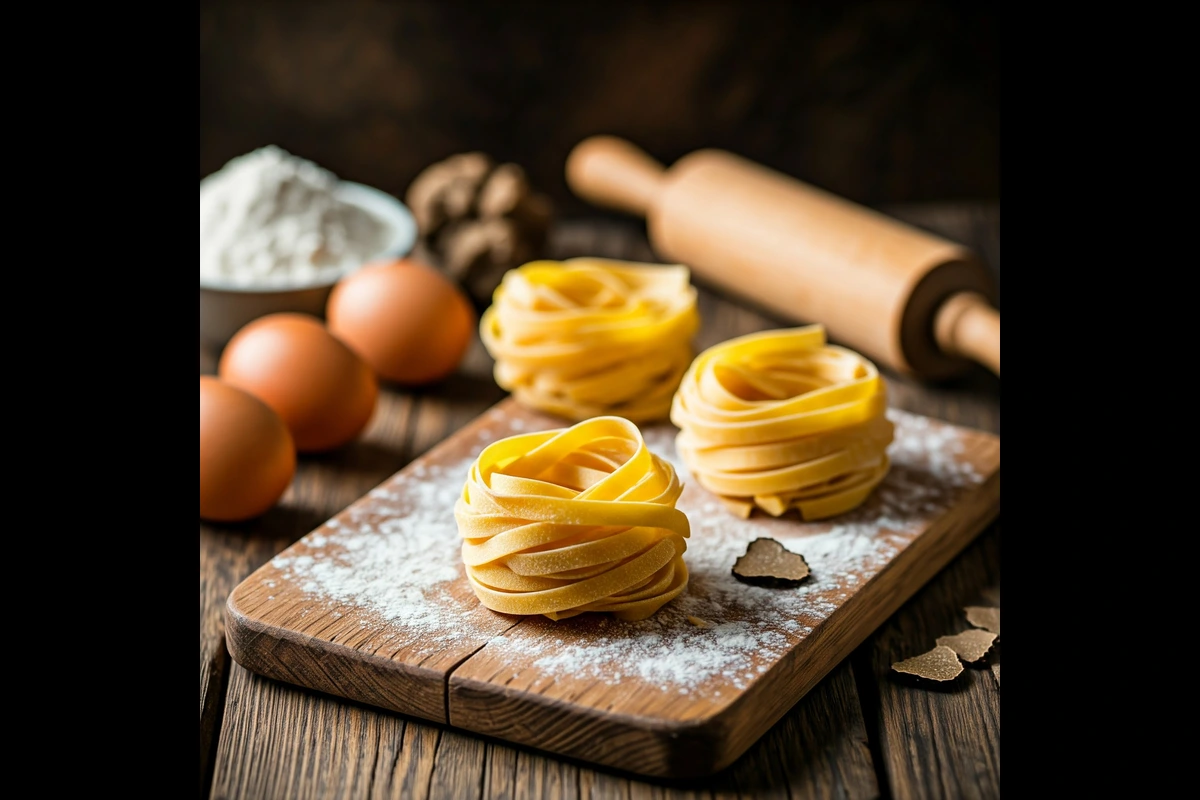Exploring the Essentials of Tagliolini Ingredients
Tagliolini, a delicate and versatile Italian pasta, has captured the hearts of food enthusiasts around the world. This article dives deep into the world of Tagliolini ingredients, shedding light on its origins, traditional recipe components, and exciting variations. Whether you’re an experienced home cook or a pasta novice, this comprehensive guide will inspire you to explore and savor the beauty of tagliolini.
What is Tagliolini?
Origins of Tagliolini
Tagliolini is a classic Italian pasta that hails from the Piedmont and Emilia-Romagna regions. Known for its fine, ribbon-like strands, tagliolini is a close cousin of tagliatelle but significantly thinner. Its name comes from the Italian word tagliare, meaning “to cut,” highlighting its handmade nature. Traditionally served in light broths or paired with simple sauces, tagliolini has become a symbol of elegance in Italian cuisine.
Difference Between Tagliolini and Other Pasta Types
At first glance, tagliolini might resemble other long pasta varieties, but subtle differences set it apart. Unlike spaghetti, which is round, or fettuccine, which is wide, tagliolini boasts a flat, narrow shape. This unique structure makes it perfect for soaking up delicate sauces like truffle butter or lemon cream. Additionally, the texture of fresh tagliolini is silkier, creating an unmatched dining experience.
Tagliolini’s charm lies in its ability to marry traditional Italian techniques with a variety of culinary styles. Its story, deeply rooted in Italy’s rich food history, sets the stage for understanding its core ingredients, explored in the next section. Stay tuned!
Key Ingredients for Traditional Tagliolini

Base Ingredients: Flour and Eggs
The foundation of Tagliolini ingredients is refreshingly simple: high-quality flour and fresh eggs. These two staples come together to create a silky and tender dough that defines tagliolini’s unique texture. Traditional Italian recipes often use 00 flour, prized for its fine consistency and ability to yield smooth pasta. However, some variations include semolina flour to enhance the pasta’s durability and add a slightly nutty flavor.
The Importance of Flour Selection
Choosing the right flour isn’t just a detail—it’s a game-changer for your pasta. For an authentic result, opt for Italian 00 flour, as it delivers the elastic yet delicate dough ideal for rolling thin ribbons of tagliolini. For those seeking a heartier option, incorporating whole wheat flour or mixing in semolina can add depth to the flavor and boost its nutritional value.
Fresh Eggs for Authentic Texture
Eggs bring richness and color to the dough, transforming simple ingredients into something extraordinary. Using farm-fresh eggs ensures that your tagliolini boasts a golden hue and velvety texture. The typical ratio for pasta dough is one egg per 100 grams of flour, but don’t hesitate to adjust based on humidity or the desired consistency.
Variations in Tagliolini Recipes
Classic Flavors: Tagliolini al Limone
Tagliolini al limone is a bright and refreshing dish that highlights the pasta’s simplicity. This recipe combines zesty lemon juice, cream, and Parmesan cheese, creating a light yet indulgent sauce. The citrusy tang perfectly complements the silky strands of tagliolini, making it a favorite for spring and summer meals.
Tagliolini with Truffles: A Luxurious Twist
Few ingredients are as opulent as truffles, and when paired with tagliolini, they create an unforgettable culinary experience. Tagliolini with truffles typically includes a sauce made from butter, cream, and grated truffle, allowing the earthy aroma of the truffles to take center stage. For added decadence, white truffle oil can enhance the dish’s flavor.
Vegetarian Options: Summer Tagliolini with Vegetables
For a lighter alternative, consider a vegetable-packed tagliolini. Popular in the warmer months, summer tagliolini features fresh produce like zucchini, cherry tomatoes, and basil. This recipe relies on olive oil and garlic to bind the ingredients, showcasing the natural flavors of the vegetables without overpowering the pasta.
For more inspiration on pasta variations, visit Tagliolini Elegant Ribbon Pasta. This resource explores the artistry behind creating this beloved dish, offering helpful tips for enthusiasts.
In the next section, we’ll explore how to pair Tagliolini ingredients with complementary flavors to elevate your pasta-making skills.
Pairing Tagliolini with Ingredients
Perfect Sauces for Tagliolini
The versatility of Tagliolini ingredients allows it to shine with a variety of sauces. For a rich and creamy option, try Alfredo or a butter-based truffle sauce. These heavier sauces cling beautifully to the thin pasta ribbons, ensuring every bite is packed with flavor. Alternatively, a light garlic and olive oil sauce with a sprinkle of chili flakes provides a quick and satisfying meal that highlights the pasta’s delicate texture.
Seasonal Ingredients for Enhanced Flavor
Embrace the changing seasons by incorporating fresh, local produce into your tagliolini dishes. In spring, peas and asparagus add a burst of green, while summer is the perfect time for zucchini, cherry tomatoes, and basil. During fall and winter, roasted squash or earthy mushrooms provide hearty, warming flavors that pair perfectly with tagliolini’s silky strands.
Meat and Seafood Combinations
Tagliolini is a fantastic canvas for meat and seafood pairings. A classic favorite is tagliolini with sautéed shrimp in a garlic lemon butter sauce. For something heartier, consider braised beef ragu or pancetta with peas. These protein-packed options add depth and create a well-rounded dish that is sure to impress at any gathering.
Tips for Making Tagliolini at Home
Essential Kitchen Tools
Making tagliolini at home requires only a few simple tools. A wooden board and rolling pin are essential for traditional pasta-making, but a pasta machine can save time and ensure even thickness. To cut the pasta into thin ribbons, a sharp knife or a tagliolini cutter is indispensable.
Step-by-Step Guide to Kneading and Rolling
The process begins with combining Tagliolini ingredients—flour and eggs—into a soft dough. Knead the dough for about 10 minutes until it’s smooth and elastic. Let it rest for 30 minutes, which allows the gluten to relax. Roll out the dough into a thin sheet, then fold it and cut into fine ribbons. Dust the strands with flour to prevent sticking.
Common Mistakes to Avoid
One common mistake is over-kneading, which can make the dough tough. Additionally, rolling the dough too thick will result in a chewy texture that detracts from the dish. Lastly, avoid letting the cut tagliolini dry out before cooking; fresh pasta cooks quickly and should be boiled immediately for the best results.
Reader Suggestion: Interested in mastering more pasta techniques? Check out Ditalini Recipes for creative pasta dishes and helpful tips for beginners.
In the next sections, we’ll delve into the health benefits of Tagliolini ingredients and explore innovative recipes that celebrate this iconic pasta. Stay tuned!
Health Benefits of Tagliolini Ingredients
Nutritional Value of Pasta Ingredients
The simplicity of Tagliolini ingredients—flour and eggs—offers surprising nutritional value. Eggs are a fantastic source of protein, providing essential amino acids that contribute to muscle repair and overall energy. They also contain vitamins like B12 and D, which support brain function and bone health. Meanwhile, flour, especially if you use whole grain or semolina, adds dietary fiber, which aids digestion and promotes a feeling of fullness.
How to Incorporate Whole Grains for a Healthier Option
For those seeking a healthier twist, replacing a portion of the 00 flour with whole wheat flour can boost the dish’s fiber content without compromising flavor. Whole grains also have a lower glycemic index, which can help regulate blood sugar levels. This simple swap ensures you can enjoy tagliolini guilt-free while still savoring its delightful taste and texture.
Creative Tagliolini Recipes to Try

Tagliolini with Porcini Mushrooms
Porcini mushrooms bring a robust, earthy flavor to tagliolini, making it a perfect dish for fall. Start by sautéing porcini mushrooms with garlic and shallots in olive oil. Toss the cooked tagliolini in the mushroom mixture, adding a touch of cream and Parmesan cheese for a velvety finish. This recipe highlights the natural goodness of Tagliolini ingredients, allowing the pasta to take center stage.
Tagliolini with Cream and Parmesan
For a comforting and indulgent option, this creamy recipe is a crowd-pleaser. Combine heavy cream and freshly grated Parmesan in a saucepan, stirring until smooth. Toss in freshly cooked tagliolini and top with cracked black pepper for a simple yet satisfying meal. A sprinkle of parsley adds a fresh finish.
White Truffle Tagliolini
If you’re craving luxury, this recipe is a must-try. Start with a butter sauce infused with a hint of garlic. Toss in the tagliolini and shave white truffles generously over the dish. The combination of rich butter and aromatic truffles elevates the pasta to gourmet status, making it ideal for special occasions.
Whether you’re exploring traditional flavors or experimenting with creative recipes, tagliolini provides endless possibilities. Its delicate structure and rich taste make it a favorite for cooks and diners alike. Try these recipes at home to experience the magic of this classic Italian pasta!
Frequently Asked Questions About Tagliolini Ingredients
What is the Difference Between Tagliolini and Fettuccine?
Tagliolini and fettuccine may seem similar at first glance, but their textures and uses differ significantly. Tagliolini is much thinner, making it perfect for light sauces like lemon butter or garlic oil. In contrast, fettuccine is broader and pairs better with rich, hearty sauces like Alfredo or Bolognese. The choice of Tagliolini ingredients also plays a role, as tagliolini dough often focuses on creating a silkier, more delicate finish.
Can Tagliolini Be Made Gluten-Free?
Yes! For a gluten-free version, replace traditional 00 flour with gluten-free alternatives like almond or rice flour. Some recipes also mix gluten-free flour with xanthan gum to achieve the elasticity needed for rolling and cutting the pasta.
What Sauces Work Best with Tagliolini?
Tagliolini excels with lighter sauces that don’t overpower its delicate ribbons. Lemon cream, garlic oil, and truffle butter are classic choices that enhance the pasta’s texture and flavor.
Is Homemade Tagliolini Better Than Store-Bought?
Absolutely! Homemade tagliolini made with fresh Tagliolini ingredients has a richer flavor and softer texture than store-bought varieties. Plus, crafting your own pasta allows you to customize ingredients to suit your dietary needs.
Conclusion – Celebrating the Art of Tagliolini
Tagliolini, with its delicate strands and simple yet versatile ingredients, is a celebration of Italian culinary artistry. From its origins in traditional kitchens to modern adaptations like gluten-free options and luxurious truffle-infused recipes, tagliolini remains a beloved staple for pasta lovers worldwide.
What sets tagliolini apart is the harmony of its components. Whether you’re using 00 flour and fresh eggs or exploring healthier swaps like whole wheat flour, the beauty of this pasta lies in its adaptability. Pairing it with seasonal vegetables, light sauces, or indulgent truffles allows you to create dishes that suit any occasion.
Moreover, making tagliolini at home adds an extra layer of joy to the cooking experience. The process, though simple, connects you to centuries of tradition while letting you unleash your creativity in the kitchen.
So, why not roll up your sleeves and give it a try? With its endless possibilities, tagliolini promises to bring authentic Italian flavors to your table, turning any meal into an unforgettable feast. Start with the recipes shared here, and let your culinary journey begin!

